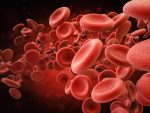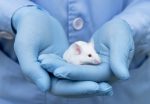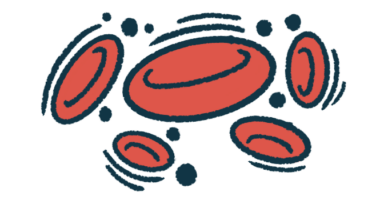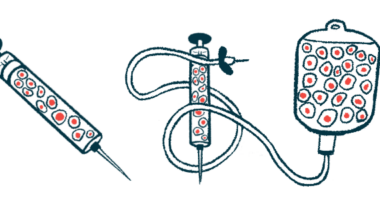Adding Briquilimab Boosts Success of Sickle Cell Stem Cell Transplant
Conditioning therapy shows promise in Phase 1/2 trial: early data

The addition of briquilimab, Jasper Therapeutics’ investigational conditioning therapy, improved the success of a stem cell transplant in people with sickle cell disease (SCD), early data from the first three patients in a Phase 1/2 trial show.
According to the company, two of the three patients, all treated with briquilimab in addition to a non-myeloablative conditioning regimen, achieved 100% donor myeloid chimerism — a measure of stem cell transplant success — 60 days after the procedure.
Also, the first patient treated with the combo therapy had total hemoglobin levels — amounts of the protein responsible for transporting oxygen in red blood cells — of 13.3 g/dL after five months of follow-up. At the start of the study, or baseline, total hemoglobin for this patient was at 8–9 g/dL.
In all three patients, transplanted stem cells gave rise to healthy blood cells, namely neutrophils, a type of white blood cell, and platelets within eight to 17 days after the transplant.
Briquilimab is “showing great promise for those with SCD,” Ronald Martell, president and CEO of Jasper, said in an emailed statement to Sickle Cell Disease News.
Testing briquilimab’s efficacy in a clinical trial
The ongoing Phase 1/2 trial (NCT05357482) is still recruiting patients, ages 4 and older, with SCD or beta thalassemia. In patients with beta thalassemia, an inherited blood disorder, the body makes less hemoglobin than normal.
SCD is a rare blood disorder in which misshapen red blood cells — shaped like a crescent and thus giving the disease its name — block and damage blood vessels, leading to complications like strokes and pain crises.
Sponsored by the National Heart, Lung, and Blood Institute (NHLBI), the trial is being led by John F. Tisdale, MD, director of the institute’s Cellular and Molecular Therapeutics Laboratory. It is being held at the National Institutes of Health Clinical Center, in Maryland.
For both SCD and beta thalassemia patients, a stem cell transplant remains the only potentially curative therapy.
During a stem cell transplant, patients can either receive healthy stem cells from a donor, which is known as an allogeneic transplant, or their own stem cells after they have been “corrected” by gene therapy. That procedure is known as an autologous transplant.
A stem cell transplant is a two-part process, with a first mandatory step called bone marrow conditioning. Conditioning plays an important part in the success of a transplant, because it eliminates the patient’s faulty blood-forming (hematopoietic) stem cells to create space for the transplanted healthy stem cells to take in, or engraft, and replace them.
“For decades, the only curative treatment for sickle cell disease (SCD) has been a donor stem cell transplant and more recently, gene therapies that modify stem cells before transplant,” Martell said. “However, one of the greatest barriers limiting patient access to these treatments is the toxic chemotherapy required to ‘condition’ or open up space in the bone marrow for new stem cells to engraft.”
Myeloablative conditioning regimens rely on toxic chemotherapy and radiation therapy. A much less aggressive regimen, called non-myeloablative, uses a low dose of radiation combined with immunosuppressive medicines and doesn’t destroy a patient’s bone marrow.
This type of regimen is believed to be safer for patients normally excluded from bone marrow transplants, like adults.
“While stem cell infusion with healthy donor stem cells or gene-corrected cells are potentially curative options for SCD and beta thalassemia, they are both limited by the toxicity of current conditioning regimens using busulfan or melphalan, which are often cited as the most concerning safety risks for transplant patients and physicians,” Martell said in a press release.
Improving the odds of a stem cell transplant for sickle cell patients
Transplant success is measured by the proportion of donor stem cells and the patient’s own cells, which is known as donor chimerism. Improving donor chimerism is key for the engraftment of a sufficient number of healthy donor stem cells that will give rise to functional red blood cells.
Briquilimab, formerly known as JSP191, is a humanized antibody that targets CD117 (also known as c-Kit), a protein receptor that’s found on the surface of hematopoietic stem cells and is required for their survival. The addition of briquilimab to a non-myeloablative regimen aims to boost donor chimerism without increasing the treatment’s toxicity.
“With briquilimab, we hope to offer a highly targeted conditioning regimen to directly address conditioning toxicity as a barrier limiting the ability of patients to access curative hematopoietic stem cell therapies,” Martell said.
The Phase 1/2 trial is assessing whether the addition of briquilimab to a non-myeloablative conditioning regimen can improve donor chimerism in people with SCD and beta thalassemia. These patients are at high risk of experiencing complications or are ineligible for standard myeloablative stem cell transplant.
In this study, the non-myeloablative conditioning regimen consists of low-dose radiation combined with two immunosuppressive medications (alemtuzumab and sirolimus).
Specifically, the trial’s main goal is to determine whether the combo regimen would increase the proportion of patients with donor myeloid chimerism of 98% or more at one year after transplant. Myeloid chimerism reflects the proportion of myeloid stem cells that give rise to white blood cells (including neutrophils), red blood cells, and platelets.
All three SCD patients treated with briquilimab showed engraftment with success, and without briquilimab-related severe adverse events.
In the first two patients, neutrophil engraftment was successfully achieved 12 days after the transplant. Platelet engraftment was seen 17 days after the transplant in the first patient, and 10 days in the second patient. The third participant achieved neutrophil engraftment at 16 days and platelet engraftment at 8 days post-transplant.
“Briquilimab, our leading targeted c-KIT monoclonal antibody, has enabled successful transplant in people with acute myeloid leukemia, myelodysplastic syndromes, severe combined immunodeficiency and Fanconi anemia,” Martell said.
“With this Phase 1/2 clinical trial of briquilimab in patients with SCD and beta thalassemia, we have observed highly encouraging results in the first three patients, including successful neutrophil engraftment for all three patients, 100% donor myeloid chimerism at 60 days post-transplant in … two participants …, and an increase in hemoglobin at five months follow up accompanied by clinical improvement in the first patient,” Martell said.








